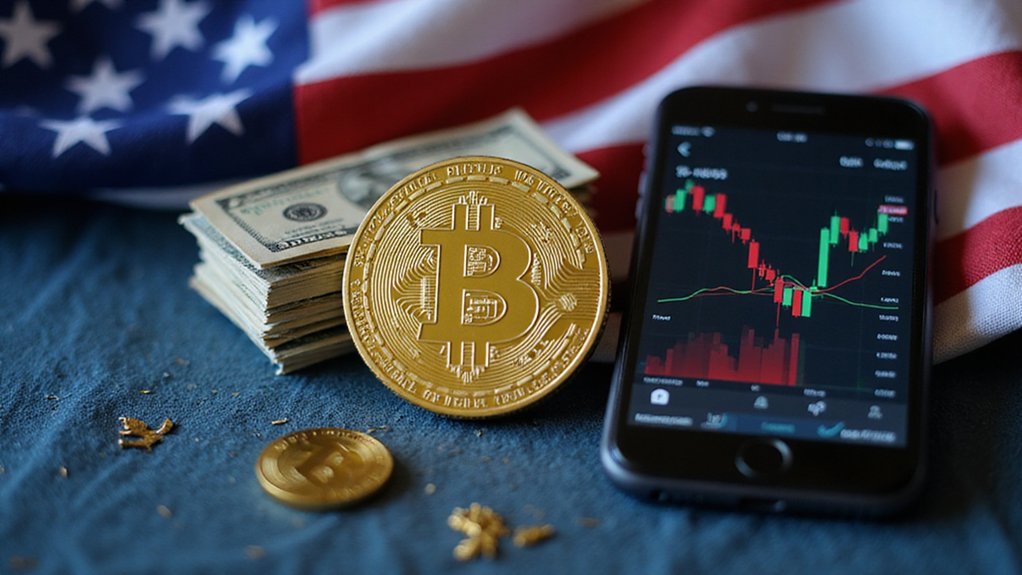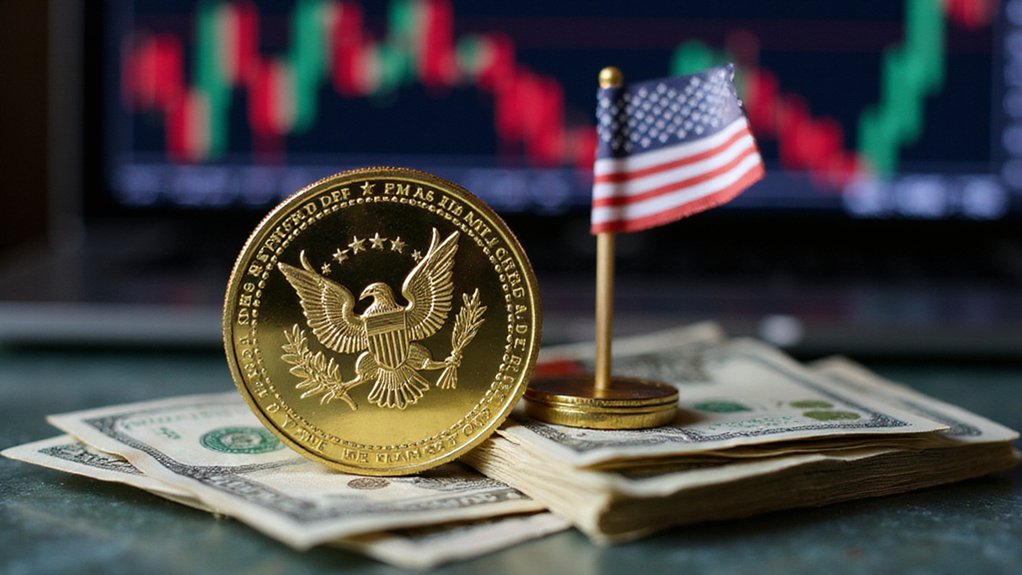Trading memecoins requires a balanced approach of technical analysis and social sentiment monitoring. Beginners should implement strict risk management—never investing more than they can afford to lose—while utilizing tools like RSI indicators and tracking community buzz on Reddit and Telegram. Position sizing matters enormously; no single memecoin should dominate a portfolio. The disciplined trader employs stop-losses religiously, recognizing that the same volatility creating 1000% gains can evaporate value with equal efficiency. The following strategy elements separate survivors from casualties.

Why has the cryptocurrency landscape, once dominated by utility-focused blockchain projects, now made room for the seemingly frivolous yet undeniably lucrative world of memecoins?
The answer lies in their unique appeal: born from internet culture and fueled by social media frenzy, these digital assets have demonstrated remarkable potential for astronomical returns (though often followed by equally dramatic collapses).
Dogecoin and Shiba Inu stand as examples to this phenomenon, having transformed pocket change investments into life-altering sums for early adopters—albeit temporarily for many.
Successful memecoin trading requires methodical market analysis rather than impulsive decisions based on social media hype.
Trade the method, not the meme—disciplined analysis outperforms social media impulses in the volatile memecoin market.
Traders should employ technical indicators such as RSI and Moving Averages to identify potential entry and exit points, while also monitoring social sentiment across platforms like Reddit, Telegram, and X.
This dual approach—technical analysis complemented by social pulse-taking—provides a more robust foundation for decision-making in this volatile sector.
Risk management represents the cornerstone of any sustainable memecoin strategy.
Implementing strict stop-loss orders, diversifying across multiple assets, and never allocating more than one can afford to lose constitute non-negotiable principles.
The experienced trader recognizes that memecoin volatility cuts both ways; the same mechanisms driving 1000% gains can evaporate value with equal efficiency.
For those seeking early positions in emerging memecoins, launchpad platforms like MemePad and Pump.fun offer potential advantages, though with commensurate risks.
Day trading and scalping strategies may appeal to those with time and technical acumen, while swing trading accommodates those unable to monitor markets continuously.
Regardless of approach, position sizing remains critical—no single memecoin should represent a significant portion of one’s portfolio. These types of cryptocurrencies often benefit from their lower transaction fees compared to more established digital assets, making them attractive for frequent traders.
Beyond established names like Dogecoin and Shiba Inu, emerging memecoins like Pepe and Dogwifhat have gained significant community support due to their viral nature and social media presence.
The memecoin market, despite its cartoonish aesthetics and occasionally absurd catalysts (an Elon Musk tweet, anyone?), demands the same rigorous analysis as traditional markets.
The successful trader navigates this space with equal parts skepticism and opportunism, recognizing that beneath the memes lie very real financial mechanisms—and consequences.
Frequently Asked Questions
Are Meme Coins Legally Recognized in All Countries?
Meme coins exist in a global regulatory patchwork, with recognition varying dramatically across jurisdictions.
The SEC’s recent (non-binding) guidance excludes them from securities classification in the U.S., while other nations lack coherent frameworks altogether.
This regulatory ambiguity—simultaneously beneficial for innovation yet perilous for investors—leaves meme coins in a peculiar legal limbo: technically permitted in many regions but without the protective guardrails afforded to traditional financial instruments.
How Do I Report Meme Coin Profits on My Taxes?
Reporting meme coin profits requires filing Form 8949 with Schedule D on your tax return, listing each transaction’s details (acquisition date, sale date, proceeds, cost basis).
The IRS treats these digital curiosities as property—not currency—subjecting them to capital gains taxation.
FIFO accounting applies by default, though specific identification methods may optimize tax outcomes.
Inclusion of transaction fees when calculating basis is advisable.
Compliance is non-negotiable; the IRS’s blockchain analysis capabilities have evolved considerably since 2019.
Can Meme Coins Become Stable Long-Term Investments?
Most evidence suggests meme coins lack the fundamental stability required for long-term investments.
While outliers like Dogecoin have maintained significant market presence, the overwhelming majority (that infamous 99% failure rate) demonstrate poor sustainability due to minimal utility and excessive dependence on social sentiment.
The projected market growth doesn’t necessarily translate to individual coin stability.
Any long-term viability would require substantial evolution—perhaps developing actual utility beyond their memetic origins¹.
¹A transformation that seems, frankly, antithetical to their core appeal.
What Happens to Meme Coins During Market Crashes?
During market crashes, meme coins typically experience amplified volatility, often plummeting more dramatically than mainstream cryptocurrencies.
Their liquidity evaporates with startling efficiency—a financial vanishing act that would impress Houdini.
Without fundamental value underpinnings, these speculative assets lack support mechanisms that might otherwise buffer market shocks.
Investor sentiment rapidly deteriorates, triggering cascading sell-offs.
Surprisingly, established meme coins (those approaching tokenized institution status) occasionally demonstrate relative resilience, though this remains the exception rather than the rule.
Which Wallets Offer the Best Security for Meme Coins?
For ideal meme coin security, hardware wallets reign supreme.
Ledger and Trezor devices offer unparalleled protection with secure element chips and air-gapped designs—features that software alternatives simply can’t match.
SafePal S1 provides budget-conscious holders robust protection at $49.99, while Tangem’s NFC cards offer an intriguing contactless alternative.
For those preferring software solutions, Zengo’s MPC technology eliminates private key vulnerabilities—though one must remember that convenience and security exist in perpetual tension.









